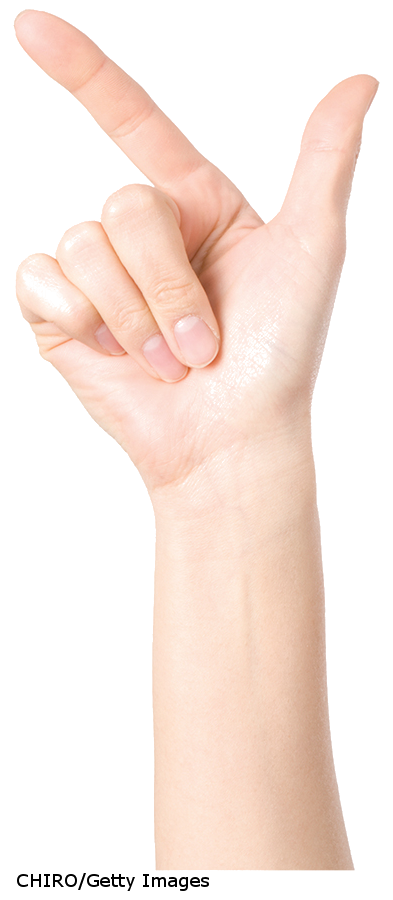summary of concepts


LO 1 Define sensation and perception and explain how they are different. (p. 88)
Sensation is the manner in which physical stimuli are received and detected. Perception gives meaning to the information the sensory receptors receive. Data-
LO 2 Define transduction and explain how it relates to sensation. (p. 89)
Sensory organs receive stimuli from the environment (for example, sound waves, light energy). The transformation of these stimuli into neural signals is known as transduction. The neural signals are then processed by the central nervous system, resulting in what we consciously experience as sensations.
LO 3 Describe and differentiate between absolute thresholds and difference thresholds. (p. 90)
One of the important goals of studying sensation and perception is to determine absolute thresholds, the weakest stimuli that can be detected 50% of the time. Difference thresholds indicate the minimum difference between two stimuli noticed 50% of the time. Weber’s law states the ratios that determine these difference thresholds. The ability to detect weak signals in the environment is based on many factors.
LO 4 Explain how electromagnetic energy is transduced into a sensation of vision. (p. 94)
For vision, light is transduced into neural activity. The neural signals are processed by the central nervous system, resulting in visual experiences. The wavelength of the light shining on objects and reflecting back at our eyes determines the color. Our experience or perception of color results from the interaction between the light in our environment and the activities in our brains.
LO 5 Describe the function of rods and cones. (p. 98)
Rods are photoreceptors in the retina that are extremely sensitive to light. Rods do not provide the sensation of color. Cones, also in the retina, are responsible for our sensation of color and our ability to see the details of objects. Cones are not used when ambient light is low. Cones are concentrated in the fovea.
LO 6 Compare and contrast the theories of color vision. (p. 100)
The trichromatic theory of color vision suggests there are three types of cones, each sensitive to particular wavelengths in the red, green, and blue spectrums. The three types of cones fire in response to different electromagnetic wavelengths. The opponent-
LO 7 Summarize how sound waves are transduced into the sensation of hearing. (p. 102)
Audition is the term used for the sense of hearing. When we hear, we are sensing sound waves, which are rhythmic vibrations of molecules traveling through a variety of forms of matter (including air). The cochlea is a fluid-
LO 8 Illustrate how we sense different pitches of sound. (p. 107)
Place theory suggests that the location of neural activity along the cochlea allows us to sense different pitches of high-
LO 9 Describe the process of olfaction. (p. 109)
The chemical sense referred to as olfaction provides the sensation of smell. Molecules from odor-
LO 10 Discuss the structures involved in taste and describe how they work. (p. 111)
Gustation is the sense of taste. The receptor cells for taste are located in the taste buds, which are located on the tongue, the roof of the mouth, and inside the mouth on the cheeks. Taste buds are embedded in the papillae on the tongue. Jutting from each of these buds are 50 to 100 taste receptor cells. Taste is essential to the survival of species. Tastes push organisms toward needed foods and away from harmful ones.
LO 11 Describe how the biopsychosocial perspective is used to understand pain. (p. 115)
The biopsychosocial perspective explains the perception of pain by exploring biological, psychological, and social factors. This multilevel method examines how these factors play a role in the experience of pain. According to the gate-
LO 12 Illustrate how we sense the position and movement of our bodies. (p. 116)
Kinesthesia is the sense of position and movement of the body, including body parts. We are aware of where the parts of our bodies are in space because of specialized nerve endings called proprioceptors, which are primarily located in the muscles and joints. Our proprioceptors monitor changes in the position of body parts and the tension in our muscles. The vestibular sense helps us deal with the effects of gravity, movement, and body position to keep us balanced.
LO 13 Identify the principles of perceptual organization. (p. 119)
Gestalt psychologists sought to explain how the human mind organizes stimuli from the environment. They realized the whole is greater than the sum of its parts, meaning the brain naturally organizes stimuli as a whole rather than parts and pieces. Gestalt indicates a tendency for human perception to be organized and complete. The organizational principles include: proximity, similarity, connectedness, closure, and continuity.
LO 14 Identify concepts involved in depth perception. (p. 119)
Depth perception appears partially to be an innate ability. Children in the visual cliff experiment, for example, refuse to move toward what they perceive to be a drop-
LO 15 Define extrasensory perception and explain why psychologists dismiss claims of its legitimacy. (p. 123)
Extrasensory perception (ESP) is the purported ability to obtain information about the world without any sensory stimuli. The study of these kinds of phenomena is called parapsychology. There is no scientific evidence to back up claims of ESP and other parapsychology phenomena.